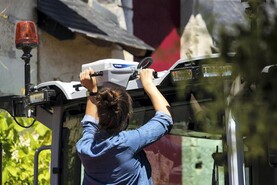Fatal accidents on NI farms peak during the busy summer months, the results of a comprehensive new study confirm.
Researchers from the Agri Food and Biosciences Institute (AFBI) analysed information from 508 fatal accidents that occurred on NI farms over a 50-year period.
The results show that 14% of the accidents happened in July and 13% occurred in June.
The months of April, May, August, and September each accounted for 10% of farm deaths. The least dangerous months of the year are December and January, when 5% and 4% of fatal accidents occurred on NI farms respectively.
Causes
The researchers found that vehicles and equipment were responsible for 53% of NI farm deaths.
These were followed by falls from a height on 19%, with 12% of fatalities due to livestock, 6% caused by slurry, while electricity is responsible for 5%.
Fatalities caused by vehicles and equipment are concentrated in the summer, when more work involving tractors and machinery takes place.
Accidents involving both livestock and falls are more evenly distributed throughout the year.
The study, which was published in the journal Economics and Human Biology, found that fatal accidents due to vehicles and equipment have “substantially decreased” over the 50-year period, although it is still the main cause of death on NI farms.
In contrast, fatalities due to livestock have increased and there has been no significant change in the proportion of farm deaths caused by falls.
The AFBI researchers found that over the 50-year period, 93% of farm accidents in NI involved men and the average age of a fatally injured person was 42.5 years.
“Regarding age, the fatality rate has a U-shaped distribution skewed towards older farmers, with the lowest incidence of deaths for middle-aged individuals,” the paper reads.
The study found younger individuals are more likely to be involved in a fatal accident in the middle of the year, while older farmers are more prone to accidents at the beginning and end of the year.






 This is a subscriber-only article
This is a subscriber-only article










SHARING OPTIONS: